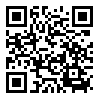
Journal of Emergency Health Care
Formerly known as: International Journal of Medical Investigation

Volume 14, Issue 1 (2-2025)
J Emerg Health Care 2025, 14(1): 0-0 |
Back to browse issues page
Download citation:
BibTeX | RIS | EndNote | Medlars | ProCite | Reference Manager | RefWorks
Send citation to:



BibTeX | RIS | EndNote | Medlars | ProCite | Reference Manager | RefWorks
Send citation to:
Tanhadoost K. Emotion Regulation Training On Self-Efficacy And Body Self Of Obese Women Referring To Treatment Clinics. J Emerg Health Care 2025; 14 (1) : 5
URL: http://intjmi.com/article-1-1244-en.html
URL: http://intjmi.com/article-1-1244-en.html
Master Of Family Counseling, Islamic Azad University, Arak Branch, Arak
Abstract: (888 Views)
Purpose: The purpose of this study is to investigate the effectiveness of emotion regulation training on self-efficacy and body self of obese women who refer to treatment clinics.
Method: This research is semi-experimental with pre-test, post-test and control group. The statistical population of this study consisted of all women with obesity who referred to medical clinics in Tehran. After the pre-test, 30 women with obesity who scored low in both questionnaires were selected as the sample group and were randomly divided into two experimental groups (15 people) and control (15 people). The tools used in this research were the MBSRQ body self questionnaire and the Sherer General Self-Efficacy Questionnaire. Emotion regulation training sessions were conducted for 10 sessions of 60 minutes on the experimental group, but no intervention was applied on the control group. Covariance analysis was used to analyze the data.
Findings: The results of data analysis in two stages of test implementation in two experimental and control groups confirmed the effectiveness of emotion regulation training on self-efficacy and body self of obese women with 0.99 confidence.
Conclusion: Emotion regulation training can be used to improve self-efficacy and body self of obese women and provide favorable results.
Method: This research is semi-experimental with pre-test, post-test and control group. The statistical population of this study consisted of all women with obesity who referred to medical clinics in Tehran. After the pre-test, 30 women with obesity who scored low in both questionnaires were selected as the sample group and were randomly divided into two experimental groups (15 people) and control (15 people). The tools used in this research were the MBSRQ body self questionnaire and the Sherer General Self-Efficacy Questionnaire. Emotion regulation training sessions were conducted for 10 sessions of 60 minutes on the experimental group, but no intervention was applied on the control group. Covariance analysis was used to analyze the data.
Findings: The results of data analysis in two stages of test implementation in two experimental and control groups confirmed the effectiveness of emotion regulation training on self-efficacy and body self of obese women with 0.99 confidence.
Conclusion: Emotion regulation training can be used to improve self-efficacy and body self of obese women and provide favorable results.
Article number: 5
Send email to the article author
| Rights and permissions | |
 |
This work is licensed under a Creative Commons Attribution-NonCommercial 4.0 International License. |




